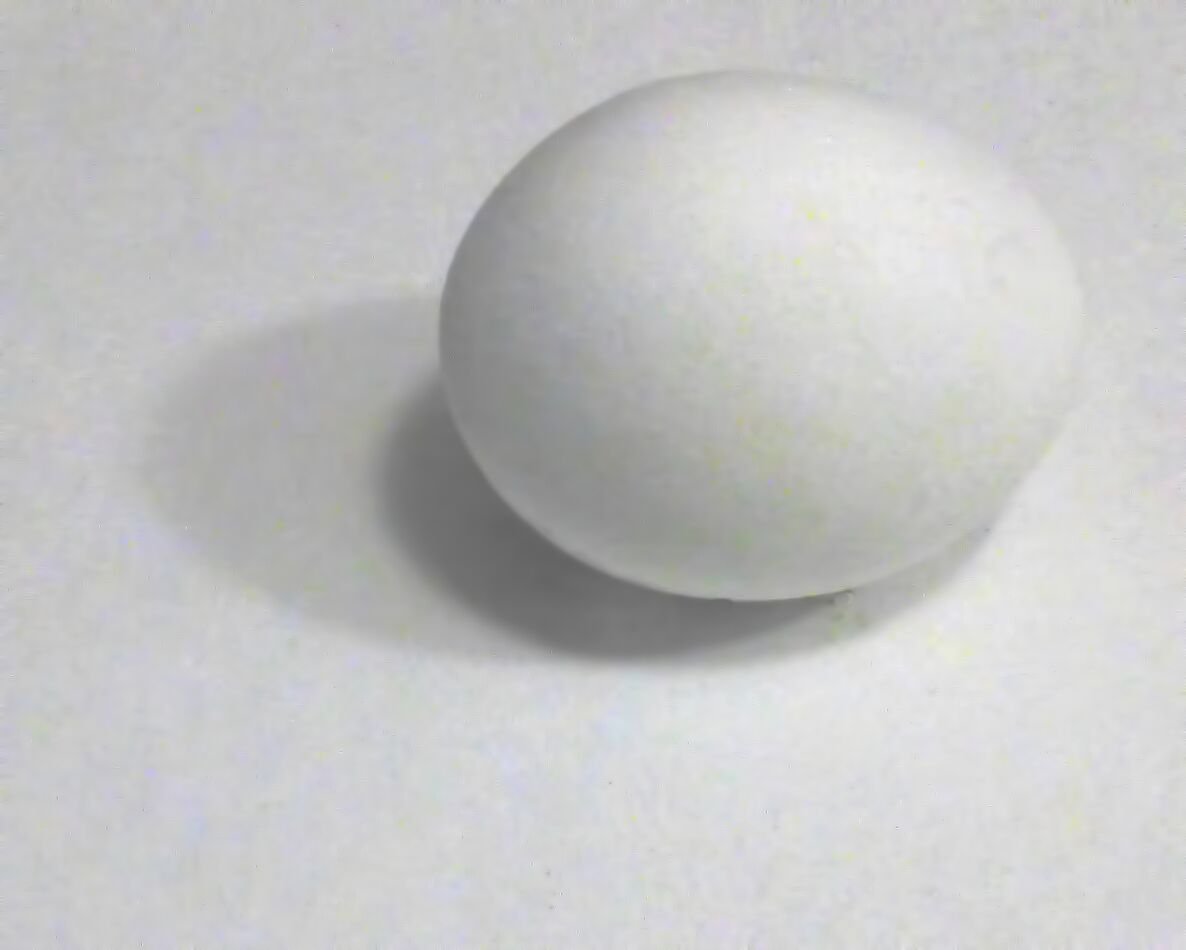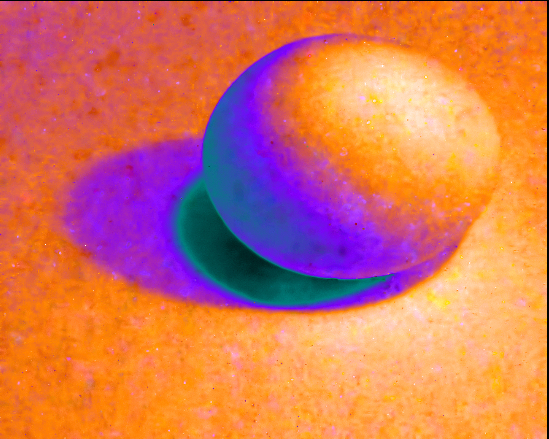Free Program With Lookup Table for Color... How2
Oct 27, 2023 14:21:42 #
There is a free Open-Source, Medical Viewing program called Weasis which will work in most operating systems. Here is how to convert a Gray image to a Pseudo-Color. The subject I have used is one of my photo TBCClub challenges... White on White. VISIT: https://weasis.org/en/
1. Open the program.
2. Under the FILE heading choose OPEN
3. The top symbol Toolbar has a MAGNIFYING GLASS, choose RESIZE TO BEST FIT for a whole image.
4. The 4-word Toolbar chose IMAGE VIEWER, Click on LUT, Look-up-Tables. There are many choices.
5. I you do not like the results there is a Counter-Clockwise Toolbar image that returns to the input image.
6. At the left there is a Pix scale that will change the color somewhat.
7. At the bottom is a color reader that tells the color where the curer is sitting
8. To export the modified image in the top pictorial Toolbar there are two photo symbols the second exports
9. There are many other controls for modifying photos... even 3D slicing of a CT X-ray scan~!
1. Open the program.
2. Under the FILE heading choose OPEN
3. The top symbol Toolbar has a MAGNIFYING GLASS, choose RESIZE TO BEST FIT for a whole image.
4. The 4-word Toolbar chose IMAGE VIEWER, Click on LUT, Look-up-Tables. There are many choices.
5. I you do not like the results there is a Counter-Clockwise Toolbar image that returns to the input image.
6. At the left there is a Pix scale that will change the color somewhat.
7. At the bottom is a color reader that tells the color where the curer is sitting
8. To export the modified image in the top pictorial Toolbar there are two photo symbols the second exports
9. There are many other controls for modifying photos... even 3D slicing of a CT X-ray scan~!
Oct 27, 2023 21:37:38 #
Oct 28, 2023 06:05:27 #
Rongnongno wrote:
Egg will hatch in the gallery.
Yes but the info on how to and the programs source will not... Yes, it is a colorful example for the gallery... or perhaps since it is an egg which is pre-hatched bird... in the Bird Section.
Oct 28, 2023 18:11:30 #
dpullum wrote:
Yes but the info on how to and the programs source will not... Yes, it is a colorful example for the gallery... or perhaps since it is an egg which is pre-hatched bird... in the Bird Section.
Rongnongno does not understand the difference between an illustration and an image. That distinction will never hatch for him.

Oct 29, 2023 10:41:08 #
Oct 29, 2023 19:27:50 #
Personally, as a retired scientist, I really like this. It really shows informational differences which are difficult/near impossible to see with the human eye.
Thanks;
Thanks;
Oct 30, 2023 06:11:20 #
JBRIII wrote:
Personally, as a retired scientist, I really like this. It really shows informational differences which are difficult/near impossible to see with the human eye. Thanks;
Yes, I recall in the 1990s doing work with etched metal for Organismic-Titanium Electrodes... and the surface variations would fall into the "do you see what I see" realm... using color would have made it obvious to the novices' eye. Never found what i wanted back then.
I gave birth to two kidney stones small to be sure... Dr sent me for a CT scan... marvelous complex 3D X-ray. I asked for a copy for my records [to play with]. Wonderfully cooperative lady tech burned me a CD complete with the proprietary program. The program did not work... needed a key... so I searched and found this program, Weasis, which was developed and provided as "open source" freeware. "The University Hospital of Geneva has a long history of medical imaging software."
https://weasis.org/en/stories/
Oct 30, 2023 07:50:22 #
JBRIII I presented this in the IR section as well as the main section. In the IR section today John Swanda said, "I can't see what that has to do with infrared."
In reply I said:
John, your question is a to-the-point worthwhile question to justify the use of this program. I hope the following clarifies the question. Easy for us science nerds to wander off the ever-man's path and thing do-you-see-what-I-see is easily seen.
True IR images, 720 nm or greater, are gray-scale images dealing with and recording absorbed and reflected heat. Our eyes/minds are not accustom to interpreting grayscale subtleties and seeing patterns with in the gray and grayer mixture images. Fore example, the subtleties in an etched metal surface. once the gray scale photo is converted all of a particular grayness are colored in a particular color. In agricultural research conversion to color is a very practical interpretive tool.
https://blog.hxgncontent.com/impact-of-color-infrared-photography-and-color-infrared-images
Here is a great site for seeing ... it has a slider for converting an aerial image into an IR-Color image...for a different prospective.
https://blog.hxgncontent.com/combine-artificial-intelligence-and-aerial-imagery-for-added-value/
From a aesthetic or non-aesthetic view the false color of a once grayscale image is interesting and visual fun. Using a 520 nm filter on a full-spectra camera is in part color ... this requires manipulation to give interesting color mixes. Look at some of the posts in the IR section of UHH.
In reply I said:
John, your question is a to-the-point worthwhile question to justify the use of this program. I hope the following clarifies the question. Easy for us science nerds to wander off the ever-man's path and thing do-you-see-what-I-see is easily seen.
True IR images, 720 nm or greater, are gray-scale images dealing with and recording absorbed and reflected heat. Our eyes/minds are not accustom to interpreting grayscale subtleties and seeing patterns with in the gray and grayer mixture images. Fore example, the subtleties in an etched metal surface. once the gray scale photo is converted all of a particular grayness are colored in a particular color. In agricultural research conversion to color is a very practical interpretive tool.
https://blog.hxgncontent.com/impact-of-color-infrared-photography-and-color-infrared-images
Here is a great site for seeing ... it has a slider for converting an aerial image into an IR-Color image...for a different prospective.
https://blog.hxgncontent.com/combine-artificial-intelligence-and-aerial-imagery-for-added-value/
From a aesthetic or non-aesthetic view the false color of a once grayscale image is interesting and visual fun. Using a 520 nm filter on a full-spectra camera is in part color ... this requires manipulation to give interesting color mixes. Look at some of the posts in the IR section of UHH.
Oct 30, 2023 09:54:56 #
Oct 31, 2023 08:24:17 #
Any regular camera can be an IR cameras by simply screwing on a 720 nm filter. IR can be enjoyed by all.
http://www.hakusancreation.com/resources/gear-talk/tips-on-shooting-infrared-with-an-unconverted-camera/
The important thing to take away is that our Digital Cameras are wondrous play things that will do so many things that were so difficult or impossible when film was the only way.
Mixed spectra color and false color understandably get confused, the following helps clarify the difference between mixed spectra and false color.
1 The category IR, as UHH defines it... "The art, science, and enjoyment of this unique branch of photography. "
Kolarivision "Infrared photography is photography of near-infrared light in the 700-1200nm range."
https://kolarivision.com/what-is-infrared-photography/
2 Kolarivision discusses broad spectra such as 550 nm filters that provide mixing viable color human perception light with "IR" is not truly IR.
3 Kodak the classic grand masters of photographic knowledge, give a detailed discussion and define their IR as being 700-1100 nm:
https://125px.com/docs/film/kodak/f13-HIE-200006.pdf
4 One IR category respondent said, "My IR work uses some IR light, even if false color IR isn't really IR. " No mixed spectra images are not really IR, they are a mixture. Many in the IR section like to use a mix light... 520, 620 nm filters. To that end, my converted cameras are "full spectra" altho, my full spectra cuts off on the UV end because my glass does not transmit UV well. Full discussion by Kolarivision:
https://kolarivision.com/uv-photography-lens-compatibility/
5 The program, Weasis, discussed here creates "false-color" from true IR gray-scale images. IR has no color the human eye can see IR according to NASA Science, " Typically, the human eye can detect wavelengths from 380 to 700 nanometers."
https://science.nasa.gov/ems/09_visiblelight/
6 IR light physics gets complicated as referenced below... "Image processing is a challenging domain of applied mathematics which has to deal with discrete and continuous representations." Weasis provides a math algorithm for converting true gray-scale IR images to give viable images. Another is "imageJ"... "Fiji is a distribution of ImageJ which includes many useful plugins."
https://www.sciencedirect.com/science/article/abs/pii/S1350449518309265
https://www.sciencedirect.com/topics/physics-and-astronomy/image-processing
https://imagej.net/software/fiji/downloads
The important thing to take away is that our Digital Cameras are wondrous play things that will do so many things that were so difficult or impossible when film was the only way.
http://www.hakusancreation.com/resources/gear-talk/tips-on-shooting-infrared-with-an-unconverted-camera/
The important thing to take away is that our Digital Cameras are wondrous play things that will do so many things that were so difficult or impossible when film was the only way.
Mixed spectra color and false color understandably get confused, the following helps clarify the difference between mixed spectra and false color.
1 The category IR, as UHH defines it... "The art, science, and enjoyment of this unique branch of photography. "
Kolarivision "Infrared photography is photography of near-infrared light in the 700-1200nm range."
https://kolarivision.com/what-is-infrared-photography/
2 Kolarivision discusses broad spectra such as 550 nm filters that provide mixing viable color human perception light with "IR" is not truly IR.
3 Kodak the classic grand masters of photographic knowledge, give a detailed discussion and define their IR as being 700-1100 nm:
https://125px.com/docs/film/kodak/f13-HIE-200006.pdf
4 One IR category respondent said, "My IR work uses some IR light, even if false color IR isn't really IR. " No mixed spectra images are not really IR, they are a mixture. Many in the IR section like to use a mix light... 520, 620 nm filters. To that end, my converted cameras are "full spectra" altho, my full spectra cuts off on the UV end because my glass does not transmit UV well. Full discussion by Kolarivision:
https://kolarivision.com/uv-photography-lens-compatibility/
5 The program, Weasis, discussed here creates "false-color" from true IR gray-scale images. IR has no color the human eye can see IR according to NASA Science, " Typically, the human eye can detect wavelengths from 380 to 700 nanometers."
https://science.nasa.gov/ems/09_visiblelight/
6 IR light physics gets complicated as referenced below... "Image processing is a challenging domain of applied mathematics which has to deal with discrete and continuous representations." Weasis provides a math algorithm for converting true gray-scale IR images to give viable images. Another is "imageJ"... "Fiji is a distribution of ImageJ which includes many useful plugins."
https://www.sciencedirect.com/science/article/abs/pii/S1350449518309265
https://www.sciencedirect.com/topics/physics-and-astronomy/image-processing
https://imagej.net/software/fiji/downloads
The important thing to take away is that our Digital Cameras are wondrous play things that will do so many things that were so difficult or impossible when film was the only way.
If you want to reply, then register here. Registration is free and your account is created instantly, so you can post right away.





